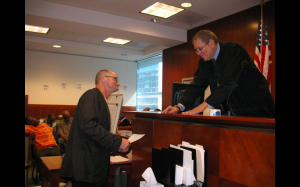 Published on September 9, 2012, I have set out possible sentencing reforms, based on the “Twelve Part Series on Evidence-Based Sentencing Systems” that may be relevant to a California County’s Realignment Process. PDF
Published on September 9, 2012, I have set out possible sentencing reforms, based on the “Twelve Part Series on Evidence-Based Sentencing Systems” that may be relevant to a California County’s Realignment Process. PDF
SENTENCING AND MANDATORY SUPERVISION UNDER PC 1170(H)
- Start the risk assessment and classification process at plea or sentencing if possible, so the judge can make the most appropriate sentencing decisions.
- Create a seamless process for offenders, with a designated sentencing judge and staff monitoring and supervising offenders through the entire sentencing period.
- Develop court tracks that reflect probation classifications based on risks/needs assessments, and tailor appropriate court involvement and contacts to that data.
- Where appropriate, hold court hearings for in-custody offenders to encourage compliance with a rehabilitation plan through continued court monitoring.
- Use the court’s jurisdiction to motivate offenders to do well in their program by providing substantial incentives keyed to an incentives guideline.
- Have all newly released offenders, on “mandatory supervision”, meet with the judge for a brief interview, to set goals and remind the offender of program rules.
- Use custody as a sanction of last resort, relying on increased rehabilitation and treatment requirements, as well as, community service to correct misbehavior.
- Take advantage of the latest scientific findings, using evidence based sentencing practices to engage the offender in pro-social activities and cognitive therapies.
- Create a technology system able to share data and information, reducing the need for team member’s personal presence, but maintaining court’s presence/influence.
- Look to probation, other government agencies, and community for partnerships.
POST RELESE COMMUNTIY SUPERVISON
- Involve the court early, if only as a symbol of the system’s new found solidarity and commitment to work together, with the judge assisting in the process.
- The court should be considered an important resource in the reentry process, and while not directing the rehabilitation plan, assisting probation and the community.
- The court should briefly interview the offender returned to the county, to remind the offender of the court’s interest, support, and concern.
- A Reentry Court. authorized by statute at the time of the revocation hearing, may become involved as a community and probation based option even before a violation occurs, in a way, similar to the process defined above under 1170 (H).

